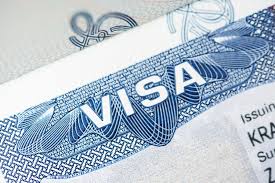Understanding Direct and Regional Center Investments
The U.S. Citizenship and Immigration Service (USCIS) launched the EB-5 program in 1990 to promote economic growth in the United States through new job creation. The immigrant investor, or EB-5, visa has evolved into a program designed specifically to help foreign nationals and their families obtain U.S. permanent residency through qualified, job-creating investment.

Investors can choose from two different types of EB-5 investments: direct investments and regional center investments. These two investment options are similar, but they do have a few key differences, which are primarily related to how job creation must be calculated.
1. Direct Investment (all 10 jobs must be direct jobs)
A small percentage of EB-5 investors prefer the direct investment method. EB-5 investors who choose a direct investment are required by law to invest in a commercial enterprise, whether alone or together with fellow investors, that directly creates at least 10 new, direct, full-time jobs that per EB-5 investor, with jobs lasting for at least two years. The commercial enterprise can be structured in a number of different ways, including as a sole proprietorship, joint venture, partnership, and limited liability company. The minimum qualifying investment amount is $900,000 if the commercial enterprise is located in a targeted employment area (TEA); if not in a TEA, the minimum investment is $1,800,000.
2. Regional Center Investment (the 10 jobs can be direct, indirect, or induced jobs)
The vast majority of EB-5 investors prefer the regional center investment method. EB-5 investors who choose to invest in EB-5 projects sponsored by USCIS-approved EB-5 regional centers can count all direct, indirect, and induced jobs created as a result of the EB-5 project. Like the direct investment method above, a regional center investment still requires a minimum of 10 jobs created per EB-5 investor, and all jobs must last for at least two years.
The main reason most EB-5 investors choose to invest in EB-5 projects sponsored by regional centers is the preferred job calculation method. This method usually results in more jobs being available per investor, which results in significantly lower immigration risk for the EB-5 investors. As with a direct investment, the minimum qualifying investment amount is $900,000 if the commercial enterprise is located in a TEA or $1,800,000 if the project is not in a TEA. And like the direct investment method, the commercial enterprise in a regional center investment can be structured in a number of ways.
Direct vs. Regional Center EB-5 Investment
Choosing between direct investment and investment via a regional center represents a relatively straightforward decision for most EB-5 investors.
The direct investment method is often preferred by foreign investors seeking to open and operate their own commercial enterprises in the United States. These investors are seeking to have full control over their investments and are looking to build successful businesses. A common goal among direct investors is to expand their existing business operations into the United States and increase their profits.
Typically, this means the investor would like to invest in a more urban, business-friendly area that may or may not qualify as a TEA due to the local unemployment rate. Most foreign investors are not seeking to open new commercial enterprises in rural areas, even though rural areas automatically qualify as TEAs. If the investor chooses to locate his or her business in an area that does not qualify as a TEA, then the investment must be $1,800,000 instead of $900,000. Generally, direct EB-5 investments are more suitable for investors that desire to have greater control over their investments and operate independently.

The regional center investment method is the most popular EB-5 investment method by far because it allows each investor to become part of a new commercial enterprise as a passive investor with minimal to no daily management responsibilities. In a regional center investment, multiple EB-5 investors are typically pooled together to make an investment in a new commercial enterprise. Since EB-5 capital in a regional center project tends to be a small portion of the total project capital, this pooled approach typically results in a large job cushion, providing more than the required 10 jobs per investor. Such a cushion reduces the stress placed on an EB-5 investor. For those who choose direct investment, the EB-5 investor is personally responsible to meet the 10-jobs-per-investor requirement.
Differences in EB-5 Investor Filing Procedures for Direct versus Regional Center EB-5 Investments
An additional distinction between a direct investment and a regional center investment is the procedure for how EB-5 investors submit their immigration applications.
EB-5 investors seeking to make direct investments can submit their applications by themselves with the help of a qualified immigration attorney. Direct EB-5 investors are, therefore, typically responsible for assembling all supporting documentation for their specific new commercial enterprise investment.
EB-5 investors seeking to make regional center investments must work with the regional centers to obtain and correctly prepare the necessary project documentation for the selected investments. Regional center EB-5 investors do not need to prepare any project-specific documentation since all of the required project documentation has already been completed and assembled by the regional center.
Conclusion
Applying for an EB-5 visa is an important step for a foreign national and his or her family—one that requires careful consideration of the family’s unique situation. Therefore, we strongly recommend speaking with a qualified EB-5 consulting firm or USCIS-approved regional center when deciding the best route for obtaining U.S. permanent residency status.










